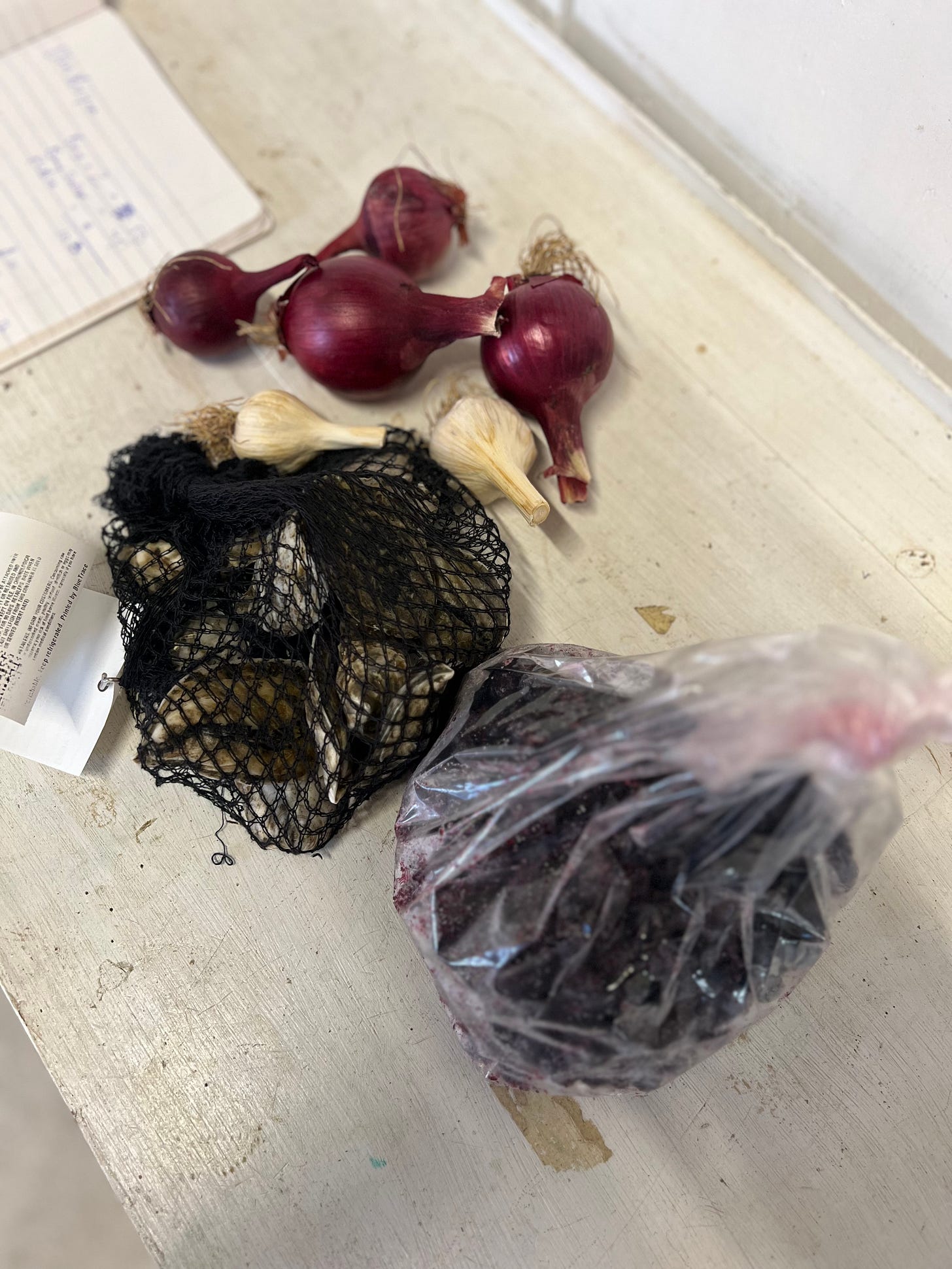There are signs of spring beginning to take shape, but winter is reluctant to release its clenched, cold fingers. Expecting warmth in March may be overeager, but we’ve had a few days where we’ve left the bay doors open.
Our big black box of a distillery doesn’t have windows when it’s cold—only the massive bay doors. When they’re closed, we’re sealed in, blind to the sun’s position—whether it’s hanging high or tucked in for the night. But when those doors start to stay open, it feels like a shift.
I’m rushing in spring with a new green artemisia liqueur. Think Chartreuse, but with a coastal tilt. I’m whipping it up for a restaurant just as preoccupied with the seasons as I am.





I worked in the freezing-cold rickhouse on the base spirit, siphoning distillates from demijohns stacked high and low. Sea fennel was the first to speak—a salty, anise-green backbone. Fresh cucumber followed, all cool clarity. I added a heavy dose of star anise for warmth, and vetiver for structure. That forest-after-rain scent, the one that clings to moss and bark when the sun cracks through? That’s vetiver. It underpins some of my favorite perfumes and colognes and gives this spirit its grounding. And so on I went, blending these single botanical distillates I had made before—distillates that capture the shimmer of seasons past.
Then came the layering—fresh shiso, pea shoots, and the stars of the show: botanicals from the artemisia family. Dried wormwood, of course. And I’m watching now for the first shoots of mugwort, ready to toss them in the moment they break ground.
While pulling a sample to send to Eleven Madison Park, I bottled a bit for myself, fitted with a dropper. I headed to Treiber Farms to grab a bag of oysters—I grab some onions and garlic for broth and blueberries—I’ve been craving scones.

March and April oysters are my favorite. With every extra minute of sunlight, every slight rise in temperature, the waters stir. Phytoplankton and microorganisms bloom, feeding the oysters, who begin building glycogen stores—a carbohydrate that brings a quiet sweetness. Still tight from the cold, but richer by the day.
I grab a shucker and work the blade into the hinge, rocking it right and left until it gives. I run the tip under the oyster belly, freeing it from the shell, and dress it with a few generous drops of my Spring Green elixir.

Savoring it, I think of Nose Dive, and Harold McGee’s observation that cucumber and melon taste like oysters—not the other way around. That in the great record of creation, oysters came first, already bursting with briny cucumber and melon notes long before either plant existed.
I pop a few more, dress them the same, and plate them to take outside to the garden. The air is still plenty cold—no need for ice. I pour a thimble of Spring and a glass of Albariño.
Wrapped in a blanket, I sit with this winter-spring moment.
And let the green come.
xx
Leslie



